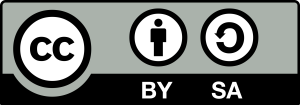#03 - Virtual Teaching at the Graz University of Technology
Guideline by the Rectorate and Senate
N.B.: A new guideline on virtual teaching was released in October 2021, replacing the one described here. See the addendum for more information.
Definition of “Virtual Teaching”
There are a large number of digital teaching and learning elements and formats. Moreover, the Internet allows for ”virtual presence“ as a form of participation in courses. In contrast to ”real presence“, it is mediated and therefore not direct, but it is characterized by active teaching activity. Virtual teaching thus encompasses various forms, from synchronous, ie. instant interaction, to asychronous, ie. delayed interaction. Whenever the term ”presence“ or ”presence teaching“ is used in this folder, real presence is meant – the virtual part will be described as virtual teaching.
The three-pillar model for virtual teaching at the Graz University of Technology
In order to establish virtual teaching in the long term, the guideline suggests a three-pillar model:
Pillar A
The use of digital teaching and learning elements or formats is always possible as a didactic tool for enriching classroom teaching.
Pillar B
Virtual teaching as a didactic tool within lectures or the lecture part of a lecture/practical can be freely implemented by the teachers up to a threshold value of 20% of the semester hours.
Pillar C
In all other cases, the amount of virtual teaching must be approved by the Study Commission Working Group and the Curricula Commission for Bachelor, Master and Diploma Studies or the Curricula Commission for Doctoral Studies and Academic Courses and must be anchored accordingly in the curriculum
For all three pillars, the amount of contact hours between teachers and students must be given to the extent ordered.
Three pillars for online-supported teaching
PILLAR A
The pillar is based on a media-supported didactic element
Initiative: by individual teachers
Framework: didactically sound use of media as added value Quality assurance: course evaluation
Motivation: possibility to improve the quality of teaching. The ”Prize for Excellence in Teaching“ has its own category which takes into account especially such teaching concepts
Focus: all courses
Objective: quality assurance through the use of new teaching and learning methods

You can find out more
about me in the FAQ.
PILLAR B
The pillar is based on an online-supported element
Initiative: by individual teachers
Framework: specification of a maximum percentage per course in the curriculum by the Curricula Commission
Quality assurance: mandatory evaluation of the measures
Motivation: possibility to improve the quality of teaching. The ”Prize for Excellence in Teaching“ has its own category which takes into account especially such teaching concepts
Focus: primarily regular studies
Objective: to improve quality through the use of new teaching and learning methods
PILLAR C
The pillar is based on a strategic guideline
Initiative: Rectorate, Senate
Framework: requirement in the curriculum, specific assignment by Dean of Studies/ Course Director
Quality assurance: approval by Study and Curricula Commission
Motivation: the possibility of part-time studies is for many a prerequisite for the decision for one of our further education offers
Focus: Part-time and international study programmes
Objective: to make part-time study possible, in particular academic courses

With the written approval of the Dean of Studies, the virtual part can be increased (above the threshold value) at any time. However, incorporation into the curriculum should still be aimed at.

 Martin Ebner
Martin Ebner